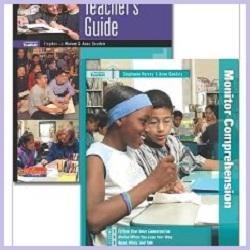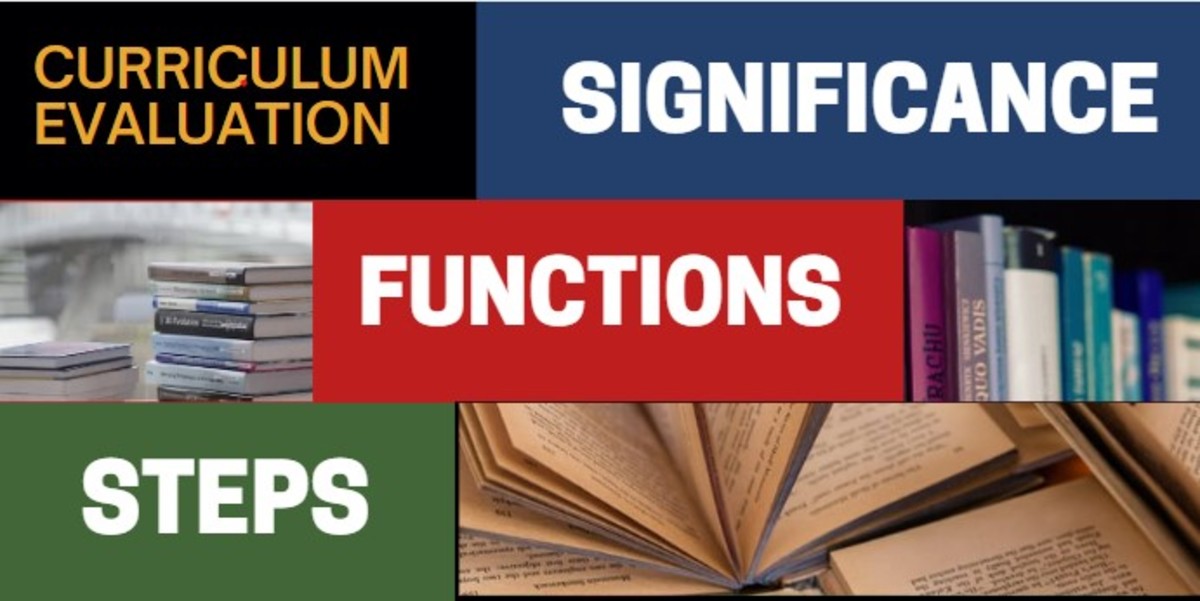The Comprehension Toolkit

Thinking Aloud, Modeling Comprehension Strategies
Children learn speech by listening to people talk. Can they learn comprehension by listening to people comprehend? That's part of the premise behind the Comprehension Toolkit, a reading curriculum. I used it in the Seattle schools, and it's among my favorite curriculum resources.
The Toolkit is based on a growing body of research about the strategies that proficient readers use. The authors didn't do all the research themselves, and they aren't the only ones using it. They did put it in a form where it's accessible to teachers and even parent teachers. The premise is this: Proficient readers integrate metacognitive strategies so seamlessly they may not realize they're using them at all. It's great for them, but it's not always great for their kids, if they struggle with comprehension.
Workbooks, particularly inexpensive workbooks sold to parents, do a good job of teaching children to be thorough. They don't always do a good job of teaching the thinking strategies that children will need in the real world (or on open-ended reading assessments).
The Toolkit gives suggested dialogue to "think out loud" while reading specific picture books. Then you (and your kids) can transfer the strategies to other books. I don't put this curriculum in the category of scripted teaching guides -- you can feel free to vary the dialogue and use your teaching skills -- but you can follow scripts for a while if you want to.
Image:Amazon
The Comprehension Toolkit in Action
Here is a snapshot of a lesson. You'll find a teacher modeling comprehension strategies as she reads Eve Bunting's How Many Days to America.
You may want to skip ahead to about the 4:30 mark. It's about this point that the teacher begins reading. It's also about this point that the background noise quiets and the video becomes easier to understand. It appears that this video was filmed in an open concept school -- one where there aren't walls to separate all the classrooms. (The first several minutes, there's a distracting buzz-buzz that apparently comes from a neighboring class.)
Teachers Discuss the Toolkit
- A to Z Teacher Stuff
Teachers discuss their experiences using Toolkit resources.
Buying the Toolkit
If your district isn't buying the curriculum, the cost can seem intimidating. If you are buying the whole kit at once, your best bet is to go to the site of the publisher, Heinemann. Amazon, on the other hand, can be a good choice for some components and supplemental materials as well as for the trade books that are used with the curriculum.
I have sometimes seen the teacher's guide and first strategy book sold together. I recommend this option only if you are 1) feeling unsure about the investment and 2) find an especially good deal on a set. it happens! Sometimes there are used copies available through Amazon -- you generally have to click on an item to see the used price. I have seen some wonderful deals on Toolkit components through Amazon. I have also seen some postings that make me wonder. If you are buying from a source other than the publisher, make sure you know what items are included.
Primary Comprehension Strategy Book
No, this is is the whole set. It's one strategy book for primary students (second grade and below). It tackles that oh-so-important, but oh-so-difficult concept: making inferences. It also tackles visualization. This is not the first book in the series -- and it is better to do all the lessons starting at the beginning -- but you do get a chance to really study the curriculum, and it's cheap.
Comprehension Toolkit Literature: Grades K- 2 - Trade Books to Accompany the Primary Series
The primary level resource incorporates nine picture books. There are some famous ones like The Art Lesson. Children don't have to be at the level of actually reading them -- it's read-aloud time!
If you are purchasing all nine books at the same time as the kit, you may want to go with Heinemann. Otherwise, you'll do well to go Amazon (especially with the four for three and free shipping specials). If you enter just one into the search, you are apt to find the others in the "frequently bought together" section.
From the Makers
Heinemann publishes and sells the curriculum.
There is a separate Comprehension Toolkit website that includes resources, samples, and testimonials.
- Heinemann Page
Links to resources. You can purchase kits here. One other cool thing you'll find is correlates between the Toolkit and Common Core standards. - The Comprehension Toolkit Site
There are a few samples available.
Your Ideas About Teaching Comprehension
What do you prefer for teaching Reading Comprehension?
Trade Books Used in the Intermediate Kit
Lessons in the strategy books are based on seven picture books (as well as on readings included in the kit).

Home Schooling Option
So what about using the materials for home schooling? The Comprehension Toolkit can indeed be used with individual children. They lose the opportunity to chat with, and learn from, each other, but they do get a lot of teacher time.
One concern, of course, is cost, especially if you have just one child. If you really like the curriculum, you can plan to use it as a (somewhat) scripted curriculum for the first year or so, then use the strategies to study books of your own choosing. In addition to strategies, you can reuse blacklines. After a year or so, you may have integrated the philosophy -- and become quite a metacognitive reader yourself.
If you have more than one child, it becomes more practical. The materials are not consumable. You can use it several years in a row. If your children are within a couple years of the same age, you can do the read-alouds and lessons with both at the same time. They can support each other in discussion.
The Comprehension Toolkit can also be used with small groups in a home school cooperative.
if you are planning on checking out the literature, familiarize yourself with the library's webpage. You can probably reserve books online. You may be able to request a book from a library in another city.
Have some and a good library? If you want to learn the strategies, but don't want to invest in all the resources, you may want to look into another resource by the same authors, Strategies that Work. Interactive Think-Aloud Lessons is another good resource for teaching the strategies. I suspect this would take less work to implement than than Strategies that Work.
Strategies that Work... by The Toolkit Authors
Strategies that Work is by authors, Stephanie Harvey and Anne Goudvis. You get more than 300 pages of research-backed material for your $24. Part of the book teaches you to teach reading; part gives you specific lessons. You do need access to a lot of books. Some re very well-known works like Good Dog, Carl and Charlotte's Web; some my be harder to find.
A Library of Short Nonfiction Readings
Heinemann also makes available collections of short nonfiction text for practicing comprehension strategies. The grade level breakdown is a little different than for the packaged kits -- and you can start even younger if you have a little reader. The first kit is PreK-1, the last grades 6 - 7. Featured here is the edition for grades 2 and 3.
This is a non-consumable resource. The price here is a tad below list, though there is a lower web/ school price on the site of the publisher.
Monitoring Comprehension - And Having Fun
This video doesn't show a lesson actually in action, but it does show a classroom of students-turned-actors show dramatize a strategy they learned from the Toolkit. You won't sleep through this one! And they won't either -- though they may look that way at the beginning.
Pre-teaching for Students who Need Comprehension Intervention
I first used the Toolkit in an intervention setting. Some of the students were second language learners, apparently fluent on the surface, but not when you consider academic vocabulary. At that time, I don't think there were supplemental materials available for second language or general intervention.
Now there are. The Intervention guide helps pre-teach vocabulary and other crucial skills in small group format before whole group lessons.
There is a separate resource about scaffolding for second language laerners.
Grades 3 - 6
What's included? There's a basic teaching guide, six books of strategy lessons, a book of short nonfiction text, and a book about extending the lessons. The lessons incorporate engaging picture books. The literature itself can be bought from the company or checked out from your library.















